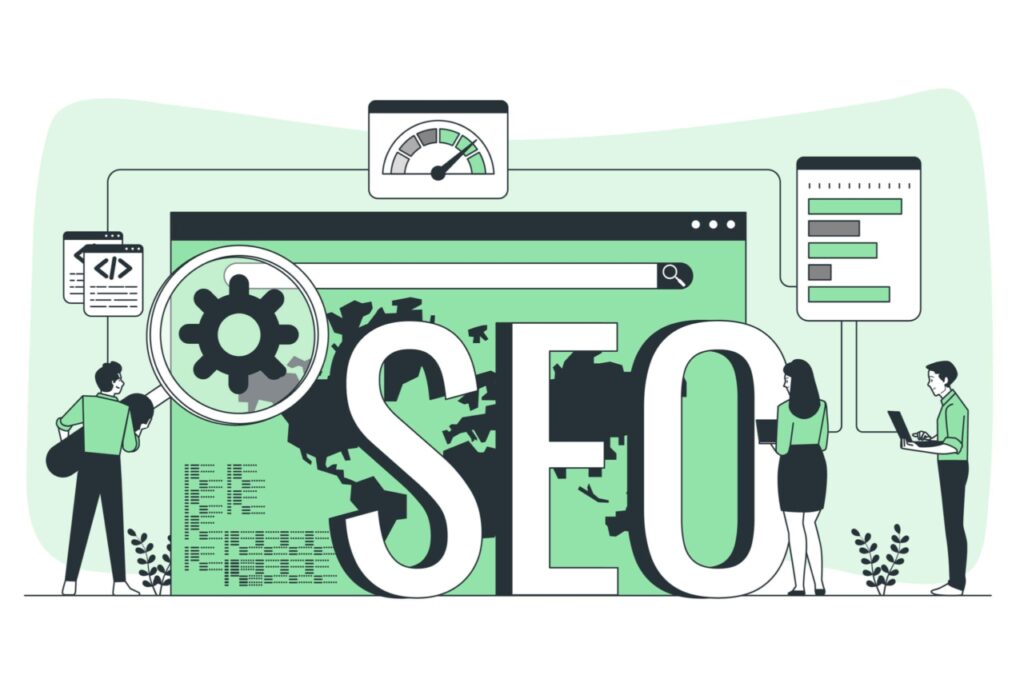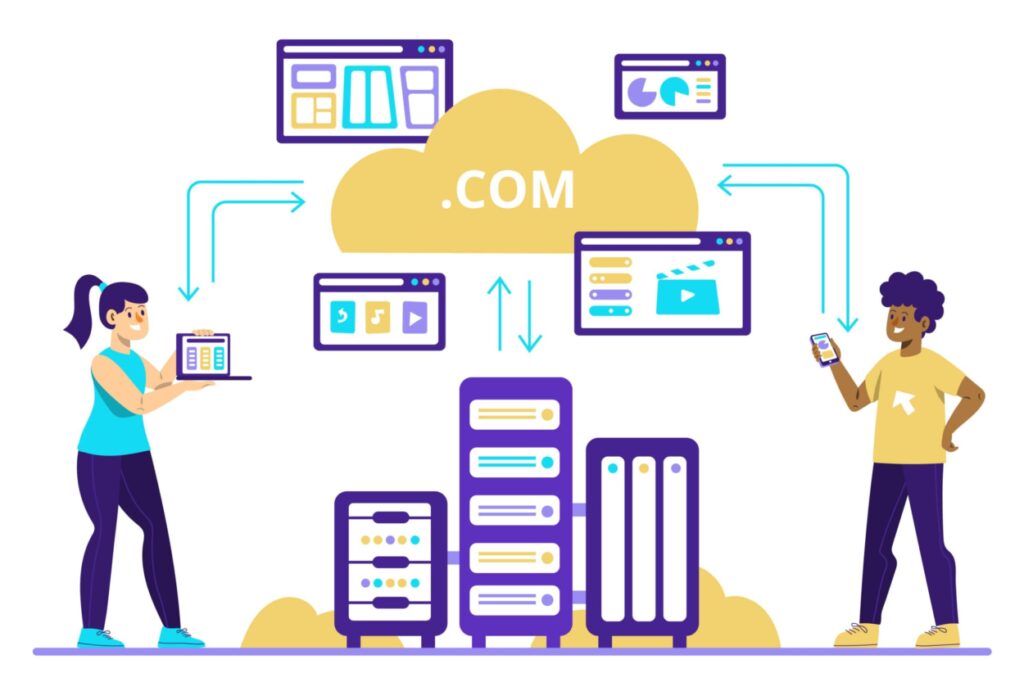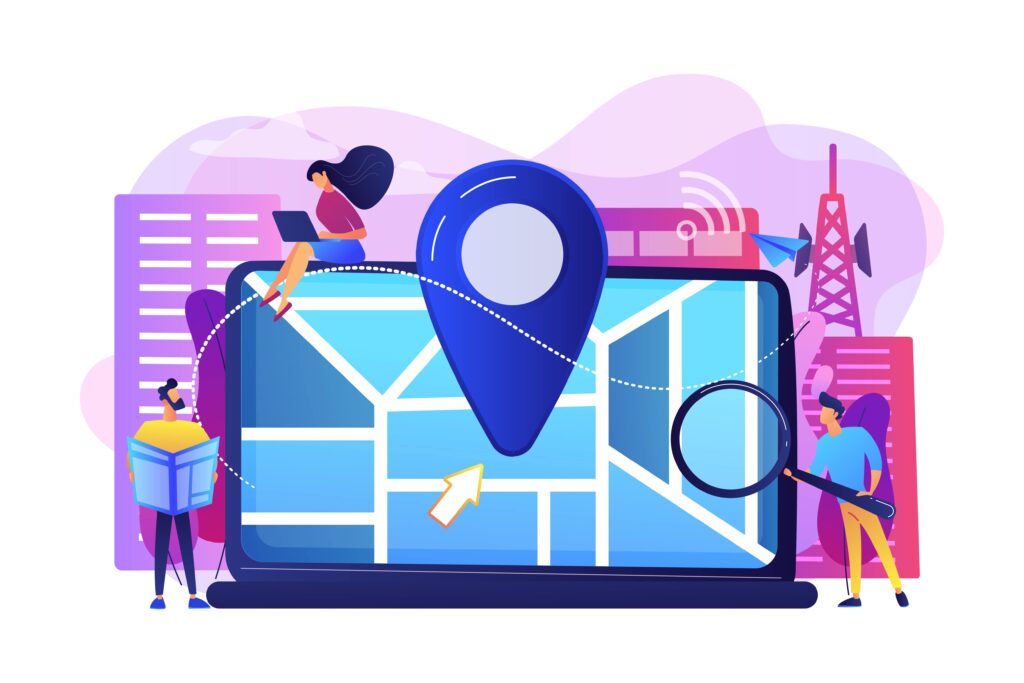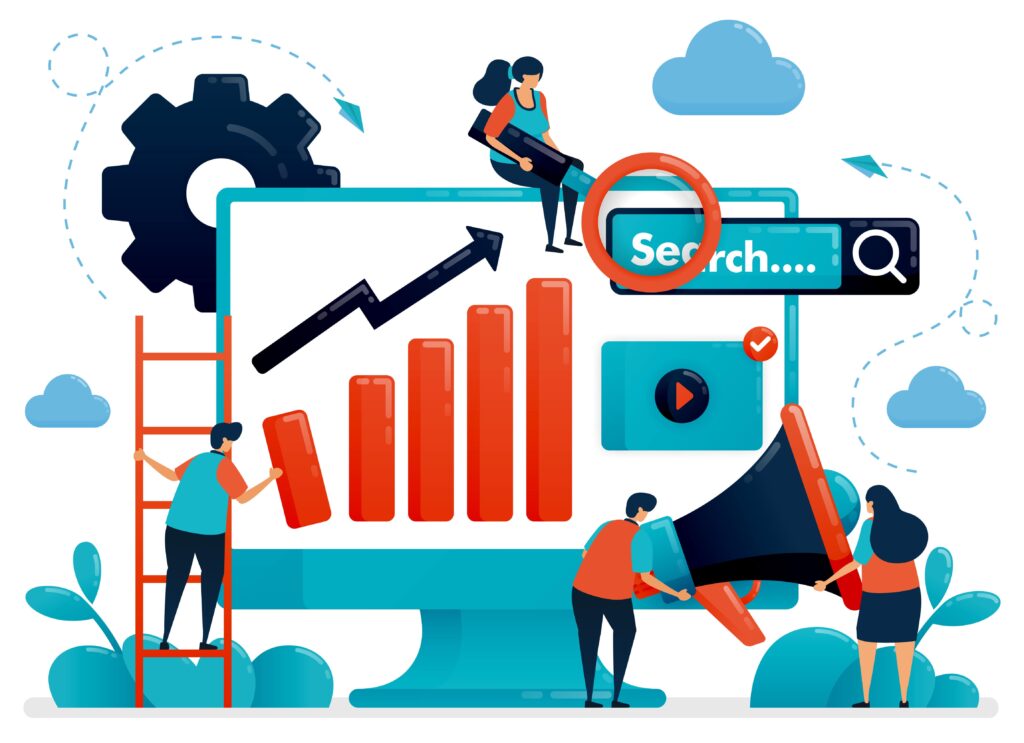SEO is not a one-time thing. It’s an ongoing process that requires constant learning, testing, and optimization. If you want to stay ahead of the competition and rank higher on Google, you need to implement advanced SEO techniques that go beyond the basics.
In this blog post, we’ll share advanced SEO techniques, tactics, and strategy that you can use to boost your organic traffic in 2024 and beyond. These are proven methods that have helped us and our clients achieve amazing results.
- What is Advanced SEO?
- Why is Advanced SEO Important?
- How to Do Advanced SEO?
- On-Page SEO Tips for 2024
- Rank for “Journalist Keywords”
- Use Animated Images to Improve Time On Site
- Create Content Hubs
- Target Comparison Keywords
- Use Dynamic Parameters for Pagination
- Off-Page SEO Tips for 2024
- Build Backlinks With Podcasts
- Leverage E-A-T Signals
- Use Schema Markup to Enhance Your SERP Presence
- Build Relationships with Niche Influencers
- Technical SEO Tips for 2024
- Conclusion
What is Advanced SEO?
Advanced SEO is simply any set of SEO techniques that require some degree of expert knowledge. It varies from person to person, but let’s just say you probably won’t master these in your first few months.
Advanced SEO typically involves technical concepts that are somewhat advanced, and/or a deeper understanding of the workings of Google’s algorithm and are often employed by professional SEOs.
Anyone can master advanced concepts with the right strategic guidance and real-life application. Here, we’ve listed some of our favorite resources on advanced SEO, and you’ll find the most recent blog posts below.
Why is Advanced SEO Important?

Advanced SEO is important because it can help you gain a competitive edge in the crowded online space. By implementing advanced SEO techniques, you can:
- Improve your site’s performance, usability, and security
- Enhance your content quality, relevance, and authority
- Increase your brand awareness, trust, and loyalty
- Generate more leads, conversions, and sales
- Achieve long-term and sustainable growth
Advanced SEO is not a luxury, but a necessity if you want to succeed in the digital world. The more you invest in your SEO strategy, the more rewards you’ll reap.
How to Do Advanced SEO?
There are three ways to affect change with SEO: on-page, off-page, and technical. In this post, we’ll closely examine these SEO techniques and how to implement them.
On-Page SEO Tips for 2024
If you’re new to SEO or looking to make quick, impactful changes, focusing your efforts on on-page SEO strategies is a great place to start. On-page SEO refers to the optimization of the elements on your web pages, such as content, title tags, meta descriptions, headings, images, etc.
Here are some on-page SEO tips that you can use to improve your rankings and traffic in 2024:
Rank for “Journalist Keywords”
Journalist keywords are terms that journalists search for when they need a stat or a quote for their articles. For example, “SEO statistics”, “content marketing trends”, “social media facts”, etc.
By ranking for these keywords, you can get in front of journalists right as they’re about to publish their piece. And if they see your stat or quote on your page, they might cite it in their articles with a link back to your site.
This is a super powerful way to build backlinks at scale from authoritative sources. For example, Backlinko published this page speed study that ranks for several journalist keywords like “page speed stats”, “page load time statistics”, etc.
As a result, they got hundreds of backlinks from reputable sites like Forbes, Business Insider, Entrepreneur, etc.
To rank for journalist keywords, you need to create original research or data-driven content that provides valuable insights on a specific topic. You can use tools like Google Surveys, BuzzSumo, or Statista to collect data for your content.
Then, optimize your page for journalist keywords by using them in your title tag, meta description, headings, and content body. You can also add charts or graphs to visualize your data and make it easier for journalists to cite.
Use Animated Images to Improve Time On Site
Time on site is a user engagement metric that measures how long visitors stay on your page before leaving. It’s also a ranking factor that correlates with Google rankings.
The longer visitors stay on your page, the more likely they are to find your content useful and relevant. And Google rewards pages that provide a positive user experience with higher rankings.
One simple way to improve your time on site is to use animated images on your page. These are basically animated GIFs but much higher quality. They can capture attention and stop people from skimming through your content.
For example, Backlinko uses animated images on their pages to illustrate their points and keep visitors engaged. And they have an average time on site of 3:27, which is impressive for a blog post.
To create animated images, you can use tools like Lottie, SVGator, or Animista.Then, embed them on your page using code blocks or HTML tags. You can also optimize them for speed and SEO by compressing them and adding alt text.
Create Content Hubs
Content hubs are collections of SEO resources organized by category or topic. They’re like mini Wikipedia pages that cover everything you need to know about a specific subject.
For example, Backlinko has an SEO Marketing Hub that contains dozens of SEO resources grouped by category, such as “Technical SEO”, “Link Building”, “Keyword Research”, etc.
Each category has a handful of entries that are optimized around a single keyword. And each entry links back to the main hub page and other related entries.
Content hubs are great for SEO because they:
- Provide comprehensive and in-depth information on a topic
- Target multiple keywords and rank for long-tail variations
- Increase internal linking and topical relevance
- Boost dwell time and reduce bounce rate
- Enhance user experience and navigation
To create content hubs, you need to:
- Choose a broad topic that your audience is interested in
- Research the subtopics and keywords that fall under that topic
- Create high-quality content for each subtopic and keyword
- Organize your content into categories and entries
- Link your content together using anchor text and breadcrumbs
Target Comparison Keywords
Comparison keywords are terms that people use when they want to compare two or more options, products, services, etc. For example, “iPhone vs Android”, “WordPress vs Squarespace”, “SEO vs PPC”, etc.
These keywords are valuable for SEO because they:
- Have high search volume and low competition
- Indicate high purchase intent and conversion potential
- Align with the user’s stage in the buyer’s journey
- Provide helpful information and guidance to the user
To target comparison keywords, you need to create comparison content that:
- Addresses the user’s pain points and goals
- Compares the pros and cons of each option objectively
- Highlights the unique selling points of each option
- Recommends the best option based on the user’s needs
- Includes a clear call to action at the end
You can also optimize your comparison content for SEO by using comparison keywords in your title tag, meta description, headings, and content body. You can also add schema markup to your page to generate rich snippets in the search results.
Use Dynamic Parameters for Pagination
Pagination is a technique that splits a long list of items or content into multiple pages. It’s commonly used on e-commerce sites, blogs, forums, etc. to improve user experience and site performance.
However, pagination can also cause SEO issues if not implemented correctly. For example, it can create duplicate content, dilute link equity, confuse crawlers, etc.
One way to avoid these issues is to use dynamic parameters for pagination. Dynamic parameters are URL elements that start with a question mark (?) and contain key-value pairs separated by an equal sign (=).
For example, https://example.com/blog?page=2 is a URL with a dynamic parameter that indicates the second page of the blog.
Dynamic parameters are beneficial for SEO because they:
- Allow you to control how Google crawls and indexes your paginated pages
- Prevent duplicate content by using canonical tags or noindex tags
- Preserve link equity by using rel=prev/next tags or self-referencing canonical tags
- Improve site speed by reducing server load
To use dynamic parameters for pagination, you need to:
- Add dynamic parameters to your paginated URLs using a question mark (?) followed by a key-value pair (e.g., ?page=2)
- Configure Google Search Console to recognize your dynamic parameters and specify how to handle them
- Use canonical tags, noindex tags, or rel=prev/next tags to avoid duplicate content issues
- Use self-referencing canonical tags or rel=prev/next tags to pass link equity to your paginated pages
Off-Page SEO Tips for 2024
Off-page SEO refers to the optimization of the elements outside of your web pages, such as backlinks, social media, online reviews, etc. Off-page SEO helps you build your site’s authority, reputation, and trustworthiness in the eyes of Google and users.
Here are some off-page SEO tips that you can use to boost your rankings and traffic in 2024:
Build Backlinks With Podcasts
Podcasts are one of the fastest-growing forms of media consumption in the world. According to Edison Research, 41% of Americans listen to podcasts monthly in 2021, up from 37% in 2020.
Podcasts are also an excellent way to build backlinks to your site. How? By becoming a guest on relevant podcasts in your niche or industry.
When you’re a guest on a podcast, you can:
- Share your expertise and insights with the podcast audience
- Provide value and actionable tips that solve their problems or challenges
- Mention your site or a specific piece of content that relates to the topic
- Ask the podcast host to link to your site or content in the show notes or description
- Promote the podcast episode to your own audience and social media followers
To build backlinks with podcasts, you need to:
- Find relevant podcasts in your niche or industry that accept guests
- Use tools like Listen Notes, Podchaser, or PodcastGuests to search for podcasts by category, keyword, or popularity
- Check the podcast’s website, social media, and reviews to see if they’re active, reputable, and have a good fit with your audience
- Pitch yourself as a guest to the podcast host via email or social media
- Craft a personalized and compelling pitch that highlights your value proposition, expertise, and topic ideas
- Follow up with the podcast host if you don’t hear back within a week or two
- Prepare for the podcast interview by researching the host, the audience, and the format
- Practice your answers and have a clear message and call to action
- Deliver an engaging and memorable interview that showcases your personality and authority
- Follow up with the podcast host after the interview and thank them for having you
- Monitor your backlinks and track your traffic and conversions from the podcast
Leverage E-A-T Signals
E-A-T stands for Expertise, Authoritativeness, and Trustworthiness. It’s a concept that Google uses to evaluate the quality and credibility of web pages and their authors.
E-A-T is especially important for YMYL (Your Money or Your Life) topics, such as health, finance, law, etc. But it can also apply to any niche that requires expertise or trust.
To improve your E-A-T, you need to:
- Showcase your credentials and qualifications on your site and author bio
- Create high-quality and accurate content that matches user intent
- Cite reputable sources and provide references for your claims
- Build backlinks from authoritative and relevant sites in your niche
- Get positive reviews and ratings from your customers or clients
- Maintain a good online reputation and address any negative feedback
Use Schema Markup to Enhance Your SERP Presence
Schema markup is a type of structured data that helps Google understand the content and context of your web pages. It also enables Google to display rich snippets in the search results, such as ratings, prices, images, etc.
Rich snippets can help you:
- Increase your click-through rate (CTR) and traffic
- Stand out from the competition
- Provide more information and value to users
- Boost your authority and trustworthiness
- To use schema markup, you need to:
- Choose the most relevant schema type for your page (e.g., product, article, review, etc.)
- Generate the schema code using a tool like Google’s Structured Data Markup Helper or Schema.org Generator
- Add the schema code to your page’s HTML or use a plugin like Schema Pro or Rank Math if you’re using WordPress
- Test your schema markup using Google’s Rich Results Test or Structured Data Testing Tool
Build Relationships with Niche Influencers
Niche influencers are people who have a large and loyal following in your industry or niche. They can help you reach a wider and more targeted audience, increase your brand awareness and exposure, drive more traffic and conversions to your site, and build trust and credibility with your potential customers.
Niche influencers are people who have a large and loyal following in your industry or niche. They can help you:
- Reach a wider and more targeted audience
- Increase your brand awareness and exposure
- Drive more traffic and conversions to your site
- Build trust and credibility with your potential customers
- To build relationships with niche influencers, you need to:
- Identify the influencers who are relevant and influential in your niche
- Follow them on social media and engage with their content
- Share their content with your audience and give them credit
- Comment on their blog posts or videos and provide value
- Reach out to them via email or social media and offer something of value (e.g., a guest post, a product review, a testimonial, etc.)
- Collaborate with them on a project or campaign that benefits both parties
Technical SEO Tips for 2024
Technical SEO refers to the optimization of the technical aspects of your site, such as speed, performance, security, crawlability, indexability, etc.
Here are some technical SEO tips that you can use to improve your site’s functionality and usability in 2024:
Optimize for Core Web Vitals
Core Web Vitals are a set of metrics that measure the loading speed, interactivity, and visual stability of web pages. They’re part of Google’s Page Experience signals that affect rankings and user satisfaction.
The three Core Web Vitals are:
- Largest Contentful Paint (LCP): measures how long it takes for the largest content element on the page to load. The ideal LCP is 2.5 seconds or less.
- First Input Delay (FID): measures how long it takes for the page to respond to the first user interaction (e.g., clicking a button, entering text, etc.). The ideal FID is 100 milliseconds or less.
- Cumulative Layout Shift (CLS): measures how much the page layout shifts during loading. The ideal CLS is 0.1 or less.
To optimize for Core Web Vitals, you need to:
- Use a fast and reliable hosting service for your site
- Minify and compress your HTML, CSS, and JavaScript files
- Use a content delivery network (CDN) to deliver your files faster
- Optimize your images for size, format, and quality
- Lazy load images and videos that are not above the fold
- Eliminate render-blocking resources that delay page loading
- Use browser caching to speed up repeat visits
- Reduce server response time (TTFB) by optimizing your database queries and server configuration
- Avoid excessive DOM elements that slow down rendering
- Prevent layout shifts by specifying dimensions for images and videos
Implement HTTPS and SSL
HTTPS (Hypertext Transfer Protocol Secure) is a protocol that encrypts the data exchanged between your site and the user’s browser. It protects your site from hackers, malware, and phishing attacks.
SSL (Secure Sockets Layer) is a certificate that verifies your site’s identity and enables HTTPS. It also helps you:
- Boost your rankings and trustworthiness
- Increase your conversions and sales
- Avoid browser warnings and penalties
To implement HTTPS and SSL, you need to:
- Purchase an SSL certificate from a reputable provider or get a free one from Let’s Encrypt
- Install the SSL certificate on your server or use a plugin like Really Simple SSL if you’re using WordPress
- Update your site’s URL from http:// to https:// in your settings and database
- Redirect all HTTP requests to HTTPS using .htaccess or a plugin like Redirection
- Fix any mixed content issues that might cause insecure warnings
Audit and Optimize Your Site’s Internal Links
Internal links are links that point from one page on your site to another. They help you:
- Improve your site’s crawlability and indexability
- Distribute your site’s authority and link juice
- Enhance your site’s navigation and user experience
- Boost your site’s topical relevance and rankings
To audit and optimize your site’s internal links, you need to:
- Use a tool like Screaming Frog, Ahrefs, or Moz to crawl your site and identify any broken, orphaned, or redirected internal links
- Fix any internal link errors by updating, removing, or redirecting them
- Use descriptive and relevant anchor texts for your internal links
- Avoid over-optimizing or stuffing keywords in your anchor texts
- Link to your most important pages from your homepage and other high-authority pages
- Link to relevant pages that provide more information or value to the user
- Use a logical and consistent site structure that follows a hierarchy of categories and subcategories
- Use breadcrumbs, menus, sitemaps, and footers to improve your site’s navigation and usability
Conclusion
SEO is a dynamic and evolving field that requires constant learning and adaptation. By following these advanced SEO tips for 2024, you can stay ahead of the curve and grow your organic traffic and conversions.
If you need help with implementing these SEO techniques or want to learn more about SEO, feel free to contact me. I’m an SEO expert who can help you achieve your online goals.🚀
Read more:
Local SEO New York: The Ultimate Checklist for Small Businesses





